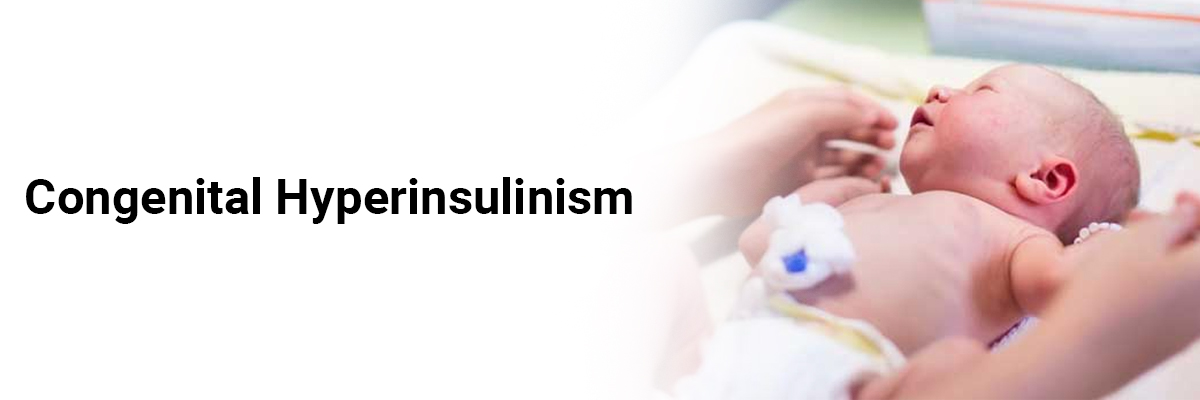
 IJCP Editorial Team
IJCP Editorial Team
Congenital hyperinsulinism
A report describes a case of a girl with normal perinatal history, born to a 32-year-old primigravida mother at 39-week gestation by cesarean section for non-reassuring fetal status. Her parents had a consanguineous marriage, and she had no family history of diabetes or hypoglycemia, nor were intrapartum drugs administered to the mother (glucose infusions, oral hypoglycaemic agents).
Further, there wasn't any history of episodes of hypoglycemia or possibly misdiagnosed as infantile seizures or unexplained deaths in other family members.
She had-
- Antenatal ultrasound scan- with normal growth with normal Doppler.
- Apgar scores- 7 and 10 at 1 and 5min, respectively.
- Normal weight, head circumference, and length
- No syndromic features or organomegaly/hepatomegaly.
- History of admission to intensive care unit after birth because of respiratory distress demanding 36 h ventilation and generalized seizure accompanied with hypoglycemia.
She was given Regular feeding every two hours with an increased amount of food to maintain normoglycemia. She got discharged with an outpatient follow-up without any treatment.
She again got admitted at day 40 of age because of irritability, lethargy, and generalized seizures accompanied by recurrent episodes of hypoglycemia. Her Septic markers were unremarkable; screening tests for inborn error of metabolism were negative; Serum ammonia, lactate cortisol, and IGF1 levels were normal. At the time of hypoglycemia (0.9 mmol/L), her insulin and C-peptide levels were increased (insulin, 55.9 µU/mL; C-peptide, 2.2 ng/mL), Serum ketones were negative, and acylcarnitine levels were low; prompting the diagnosis of hyperinsulinism.
She experienced a rise in glucose levels following glucagon administration. Thus received a diagnosis of Congenital hyperinsulinism through a combination of clinical and laboratory findings, including clinical presentation, hyperinsulinism, low serum ketone bodies, and low serum fatty acids with an increase in blood sugar levels after glucagon injection.
Considering the initial diazoxide unresponsiveness, the patient and her parents underwent genetic studies.
She received increasing glucose infusions (maximum of 22 mg/kg/min) for maintaining normoglycaemia in combination with oral diazoxide (20 mg/kg/day); which was, however, ineffective and caused repeated episodes of hypoglycemia 2-3 times a day leading to combined treatment with intramuscular injections of Octreotide (40 mg/kg/day) maintained glycemia within the normal range for several days. However, this treatment needed discontinuation because of side effects (persistent vomiting, functional invagination). Her hypoglycemic episode became more frequent, and intravenous glucose requirement increased up to 12 mg/kg/min to maintain normoglycemia.
While continuing the aggressive medical management, a surgical opinion was made based on the high glucose infusion requirement and initial diazoxide unresponsiveness. Unfortunately, the patient could not survive beyond six months of age because of generalized seizures accompanied by profound hypoglycemia.
Hasbaoui BE, Elyajouri A, Abilkassem R, Agadr A. Congenital hyperinsulinsim: case report and review of literature. Pan Afr Med J. 2020 Feb 24;35:53. doi: 10.11604/pamj.2020.35.53.16604. PMID: 32537058; PMCID: PMC7250230.

IJCP Editorial Team
Comprising seasoned professionals and experts from the medical field, the IJCP editorial team is dedicated to delivering timely and accurate content and thriving to provide attention-grabbing information for the readers. What sets them apart are their diverse expertise, spanning academia, research, and clinical practice, and their dedication to upholding the highest standards of quality and integrity. With a wealth of experience and a commitment to excellence, the IJCP editorial team strives to provide valuable perspectives, the latest trends, and in-depth analyses across various medical domains, all in a way that keeps you interested and engaged.




















Please login to comment on this article